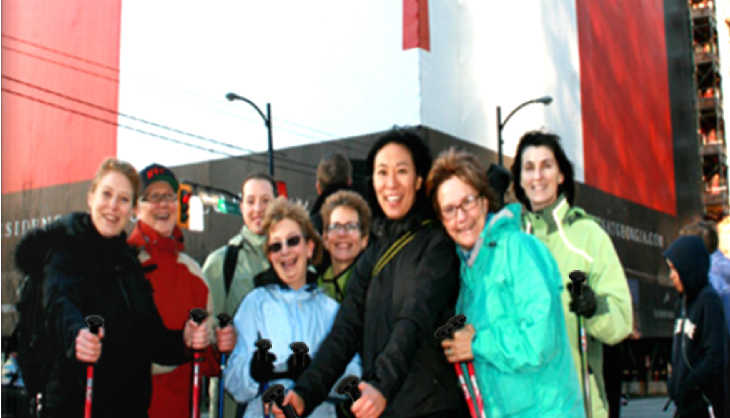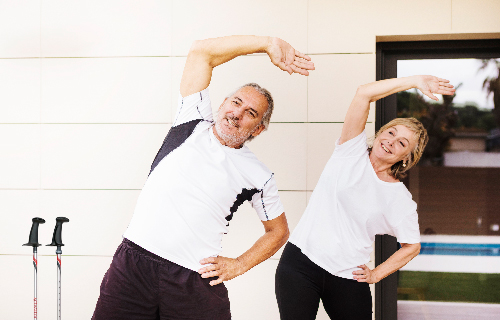Nordic Walking Pilot Trial – McGill University
Canadian Physiotherapy Association, May 2010.
A003 –Nordic walking for geriatric rehabilitation: A randomized pilot trial
S Figueiredo,(1),(2) L Finch,(2) M Jiali,(2) S Ahmed,(1) A Huang,(3) and NE Mayo(1),(2),(3)
1)Faculty of Medicine, School of Physical and Occupational Therapy, McGill University, Montreal, Qc, Canada2)Division of Clinical Epidemiology, McGill University, Montreal, Qc, Canada3)Faculty of Medicine, Department of Geriatrics, McGill University, Montreal, Qc, Canada
Purpose/Objectives and Rationale: There is a need to identify effective interventions to promote walking capacity in seniors. This study will be the first to directly compare, using a randomized trial, Nordic Walking, a new technique, with traditional walking. The objective was to estimate the relative efficacy in improving walking capacity of Nordic walking and Overground walking for the elderly.
Relevance to the Physiotherapy Profession: Rehabilitation professionals are charged to use evidence-based practices, and because walking independence is of key importance, strategies to promote walking capacity would be of great benefit to elders and the health care system.
Materials and Methods: Participants randomized to Nordic Walking group (n = 14) were instructed on the use of the poles and used them with a therapist for 20 minutes, twice a week for six weeks; participants in the control group (n = 16) walked with the therapist without poles for the same amount of time. Outcomes were 6-minute walk test, gait speed, balance, pain, and leg function.
Analysis: Baseline and follow-up values on gait speed and distance walked were compared between the two groups using effect size; relative efficacy was calculated as the ratio from it was obtained.
Results: Nordic and Overground Walking participants improved 41 meters on the 6MWT and increased their gait speed by 0.21 m/s and 0.08 m/s, respectively. Only improvement in gait speed in the Nordic Walking group reached statistical significance, with a large effect size of 0.9.
Conclusions: Nordic Walking is 125% more effective in improving gait speed among a rehabilitation population than Overground Walking.
Physiother Can. 2010 July; 62(Suppl 1): 1–54. > Sub-article 108



